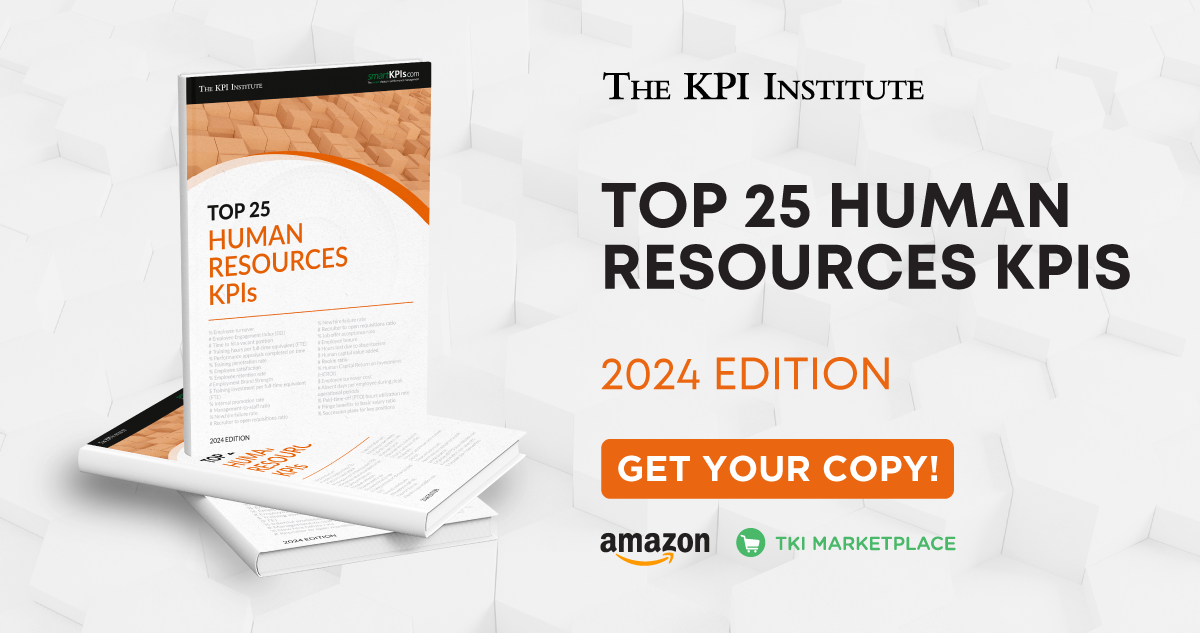
Top 25 human resources KPIs for driving strategic business decisions now available
September 18th, 2024 Posted by Kimberly Tilar KPIs, Publications 0 thoughts on “Top 25 human resources KPIs for driving strategic business decisions now available”
The role of human resources (HR) extends far beyond traditional functions like recruitment and employee relations. Today’s HR professionals can influence organizational success through their evolving role in strategy and performance management.
HR has shifted from merely handling administrative tasks to leading workplace culture and engagement. A Forbes article highlights that the future of HR is defined by two main focus areas: enhancing the employee experience and driving innovation. Moreover, HR leaders are now integral to strategic business decisions, especially in addressing workplace trends, including artificial intelligence (AI) integration and addressing diversity, equity, and inclusion (DEI), and sustainability.
HR can rely on key performance indicators (KPIs) to ensure the effectiveness of their initiatives and processes. According to The KPI Institute’s State of Strategy Management Practice Global Report – 2023, organizations primarily use KPIs in two main areas: assessing employee performance and evaluating overall corporate performance.
Integrating KPIs into employee evaluations helps set clear expectations, track progress, and provide feedback. Furthermore, using KPIs for corporate performance helps monitor progress toward strategic goals and drive organizational success. To guide HR leaders in selecting the most effective KPIs, The KPI Institute (TKI) has released the Top 25 Human Resources KPIs – 2024 Edition. This report series is designed to share TKI’s expertise in utilizing KPIs for performance measurement. Inside the report is a practical, step-by-step guide for improving performance, which highlights how KPIs can bring greater clarity, focus, and enhancement to any performance measurement process.
The 2024 edition of the Top 25 KPIs reports features a two-page KPI Documentation Form Template. The first page includes updated fields based on the latest research and analysis from TKI, and the second page provides essential guidance on KPI reporting. The 2024 edition features practical examples of KPI results and illustrative designs for scorecards and dashboards for each KPI featured in the report.
The Top 25 Human Resources KPIs consist of 17 functional areas with 61 main functions, including accounting, information technology, and supply chain, procurement, and distribution. It also compiles from 25 industries with 100 divisions such as transportation, government – state / federal, and healthcare.
The KPIs in this report are distributed in six categories: Retention, Talent Development, Recruitment, Workforce, Absenteeism, and Compensation and Benefits. In this year’s report, % Employee turnover is highlighted as the leading KPI, which falls under Retention. It “measures the rate at which employees leave the organization in a given time period (e.g., month, quarter, year).”
To gain deeper insights into the significance and function of % Employee turnover and to uncover the other top KPIs shaping the HR industry, explore the Top 25 Human Resources KPIs – 2024 Edition. The full report is now available for purchase in print on Amazon and for digital download from the TKI Marketplace.


